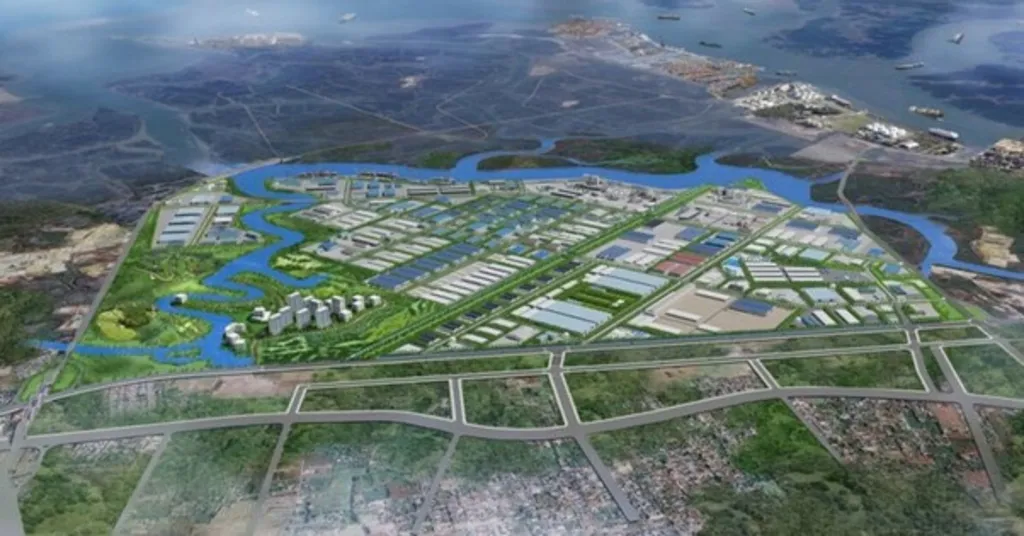 Brandinfo
Brandinfo

 |
| Phú Mỹ III Industrial Park |
The strategic role in Southeastern Vietnam
On 7 October 2022, the Politburo of the Communist Party of Vietnam issued Resolution No. 24-NQ/TW on socio-economic development, defence, and security assurance for the Southeastern region through 2030, with a vision towards 2045. The resolution highlights the region’s strategic importance across multiple domains, including politics, economy, culture, society, national defence, security, and foreign relations.
 |
| Cái Mép - Thị Vải River |
In the resolution, the Politburo outlined a development strategy for the Southeastern region through 2030, aiming to transform it into a dynamic growth area with high economic growth rates, the largest growth driver in the country, and a hub for science and technology, innovation, high-tech industries, logistics, and a highly competitive international financial centre in the region.
For BR-VT, the Politburo plans to transform the province into a national marine economic centre, combining its seaports with a variety of ecotourism, resort, cultural, sports, and high-end entertainment services. The Politburo also advocates for investment in the development of port logistics systems and international transshipment ports in BR-VT, while working to develop Vũng Tàu City into a world-class, high-quality tourism centre.
The coastal sub-region, including the Cần Giờ area of Ho Chi Minh City and BR-VT, will focus on developing key maritime industries, including port logistics, oil and gas extraction, petrochemicals, offshore tourism, and seafood farming and processing.
A thriving economic powerhouse
Over the past three decades, BR-VT has firmly established itself as one of the fastest-growing provinces in Vietnam. Its GRDP consistently ranks among the top in the country.
In the first nine months of 2024, the province exceeded 13 out of its 14 key economic targets, with its GRDP (excluding oil and gas) growing by 11.46%, the highest rate in the past decade, placing it fourth nationwide.
 |
| Provincial officials present investment certificates to both domestic and foreign investors. Photo: Thanh Huyền |
As of now, BR-VT is home to 489 foreign direct investment (FDI) projects, with a total registered capital of USD 33.45 billion, and 697 domestic investment projects, totalling VND 406.51 trillion.
The province's economic growth is underpinned by four key pillars: industry, ports and logistics, tourism, and high-tech agriculture.
In its 2021–2030 development plan, with a vision for 2050, BR-VT aims to solidify its position as a key driver of economic development within Southeastern Vietnam. By 2030, it seeks to be recognised as a national marine economic hub, ranking among the top five provinces in Vietnam for marine economic development. The province also plans to meet the criteria for a centrally governed city, with a multi-centred urban structure and an integrated, multimodal transportation network.
In the industrial sector, the province plans to develop large-scale industrial-service-urban complexes capable of participating in and effectively linking with the industrial, urban, and service networks of Southeastern Vietnam, along the Belt 3 and Belt 4 corridors in Ho Chi Minh City and the region’s highway system. It also aims to develop green industries with the capacity to integrate deeply into global production networks and value chains.
To develop the maritime services and logistics sector, the province will leverage the role of its national gateway port system, continuing to modernise and upgrade the Cái Mép–Thị Vải International Gateway Port into a major regional and global transshipment hub. This will be connected to the Mộc Bài - Ho Chi Minh City - Biên Hòa - Vũng Tàu economic corridor and the Trans-Asian economic corridor, solidifying its role as the primary maritime gateway for the Southeastern region.
For tourism, the province will capitalise on its advantages in coastal areas, islands, mountainous landscapes, rich biodiversity, and cultural and historical resources to develop BR-VT into a high-quality tourism centre of national and international significance.
In terms of the marine economy, the province aims to develop into a national marine economic hub, meeting national criteria for sustainable marine economic development. This will include forming and developing key marine sectors that meet international standards, including: marine tourism; the maritime economy (ports, logistics, shipping services); oil and gas exploration and other marine mineral resources; coastal industries; seafood farming and harvesting; renewable energy; and emerging marine industries such as marine science, technology, and coastal urban development./.




